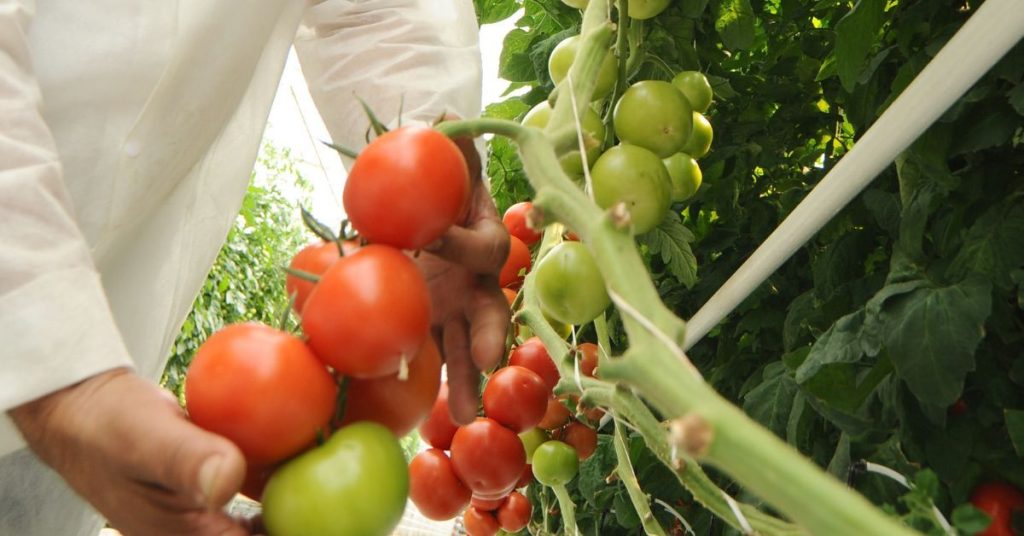A shot a day keeps the waste at bay…
Traditional pesticide spraying is highly inefficient, with 30-50% of chemicals ending up in the air or soil instead of on the plants.
Now, researchers from Massachusetts Institute of Technology and Singapore have developed a far more precise and minimally invasive way to deliver nutrients and monitor plant health using tiny, silk-based microneedles.
Their study introduces a low-cost method to mass-produce hollow silk microneedles that can be inserted into plant tissues to precisely administer agrochemicals like iron and vitamin B12, or to detect environmental contaminants such as heavy metals.
In field demonstrations, the microneedles successfully treated iron deficiency (chlorosis) in tomato plants and biofortified them with vitamin B12, which is typically absent in plant-based foods (causing no adverse effects on plant growth).
The microneedles also function as real-time monitoring tools, enabling sap sampling and early detection of toxic substances like cadmium (absorbing the toxin within 15 minutes of injection and tracking cadmium levels in tomatoes over 18 hours).
Importantly, the fabrication method does not require cleanroom facilities or expensive equipment, making it accessible for broader agricultural use.
“You could do it in your kitchen if you wanted.”
Implication for Farmers
The researchers see microneedles as a complement to existing practices like spraying, with future potential in automated farming systems that support sustainable, scalable precision agriculture.
For now, though, Marelli believes the microneedles offer a path to more precise, sustainable agriculture practices.
“We want to maximise the growth of plants without negatively affecting the health of the farm or the biodiversity of surrounding ecosystems,” Marelli says. “There shouldn’t be a trade-off between the agriculture industry and the environment. They should work together.”
Researchers believe these microneedles could be used alongside current agricultural practices, like spraying, to improve how nutrients and agrochemicals are delivered to crops. The technology also has potential applications beyond agriculture, including in biomedical engineering and health monitoring.
As Dr Cao explains, “This new polymeric microneedle fabrication technique may also benefit research in microneedle-mediated transdermal and intradermal drug delivery and health monitoring.”
For now, though, Professor Marelli sees microneedles as a promising step towards more precise and sustainable farming. “We want to maximise plant growth without compromising the health of the farm or the biodiversity of surrounding ecosystems,” Marelli says. “There shouldn’t be a trade-off between agriculture and the environment. They should work together.”This approach aligns with the broader shift in Australian agriculture towards sustainability and resilience, as the sector faces increasing pressure to improve efficiency, reduce environmental impacts, and meet global standards for sustainable production.
With most of Australia’s agricultural output destined for export, innovations like microneedle technology could help local farmers boost productivity while protecting the land and supporting long-term industry viability
Researchers mentioned: Benedetto Marelli, Yunteng Cao, Doyoon Kim, Daisuke Urano
